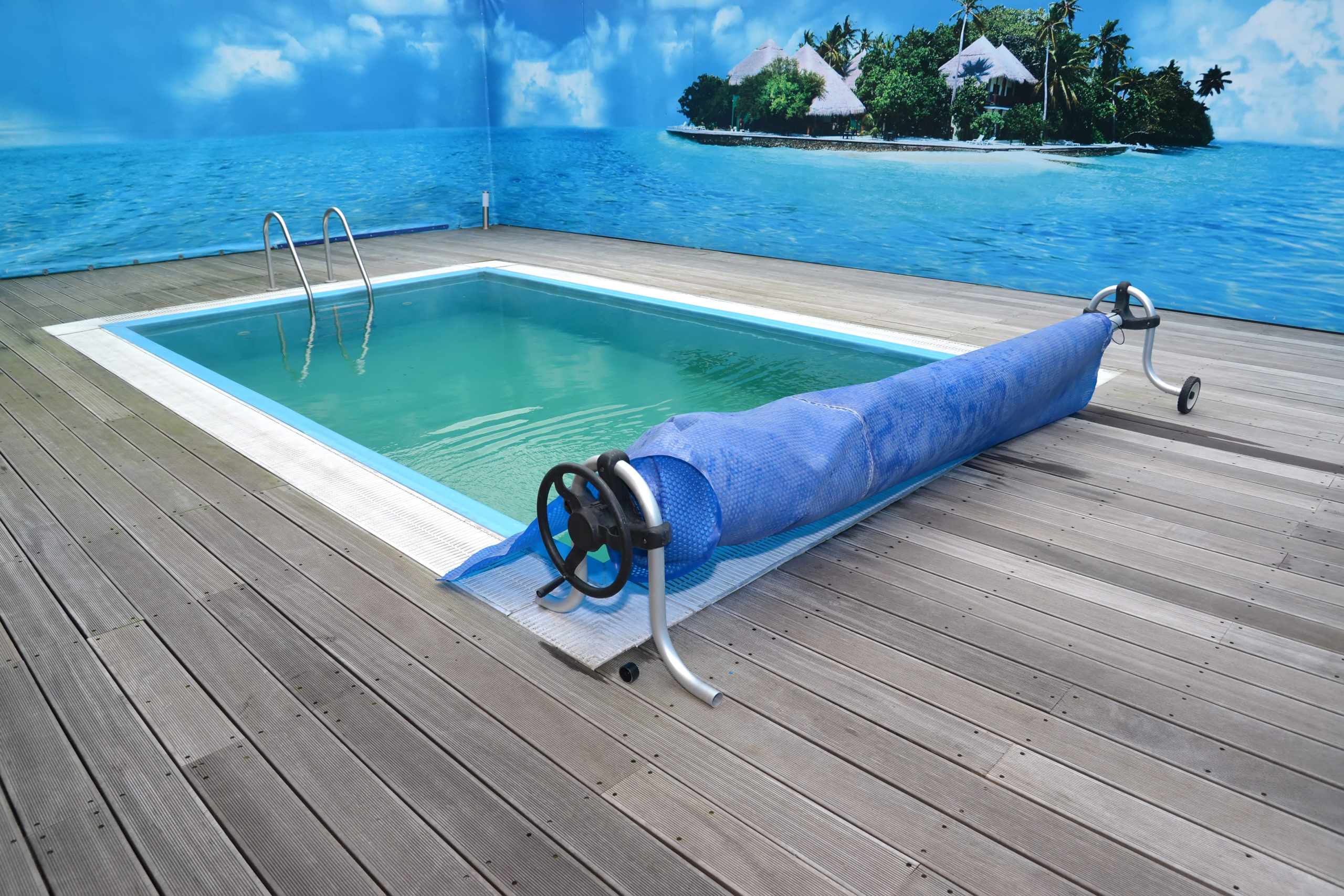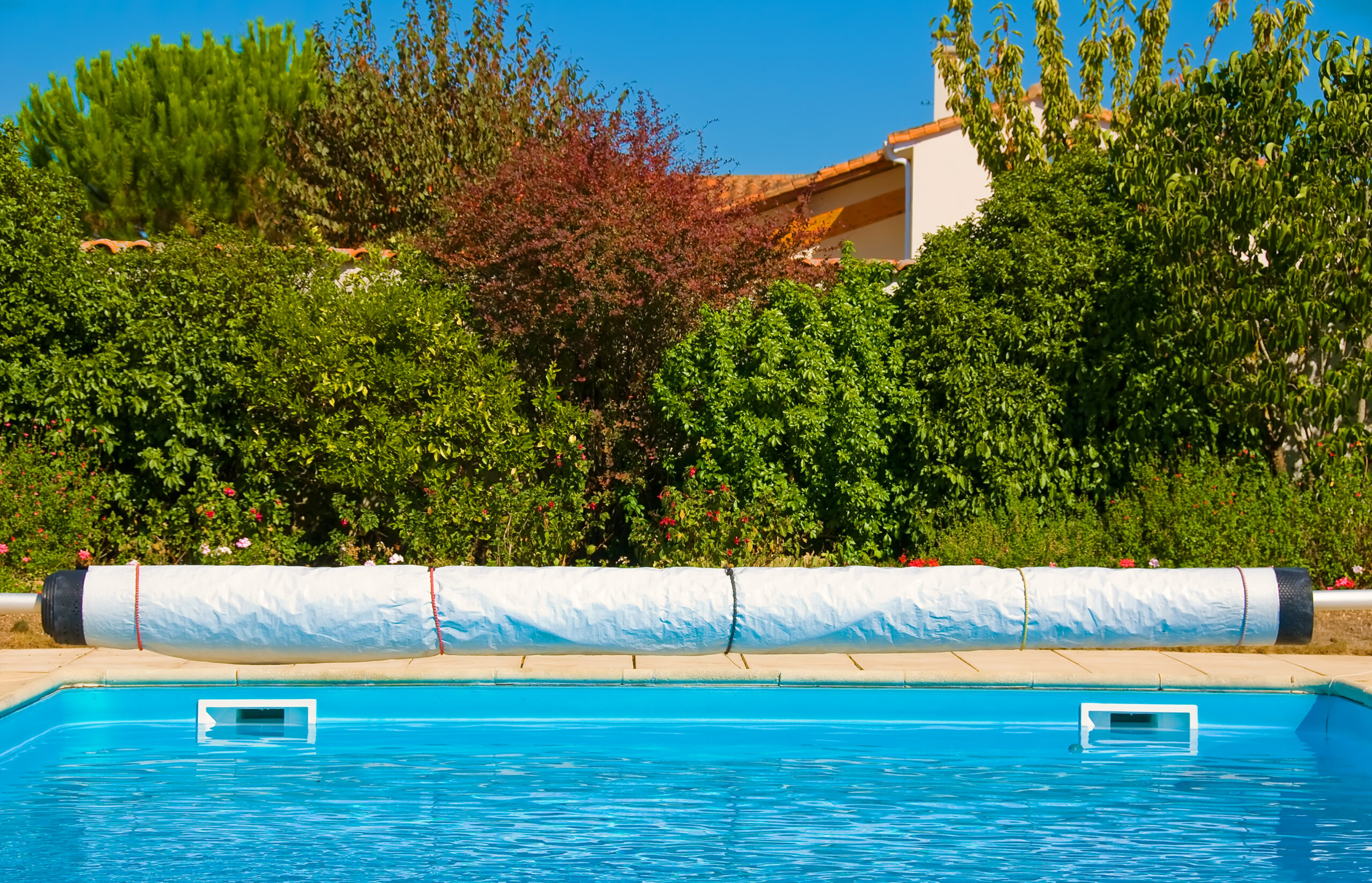You’re investing in a pool cover but feeling overwhelmed by the options. Don’t worry! This guide will break down the different types of covers and their benefits.
Whether you’re looking for energy efficiency, safety, or protection against harsh winters, we’ve got you covered.
Dive in to make an informed decision that’ll save you time, money, and maintenance efforts – because owning a pool should be more about enjoyment than stress.
Understanding the Variety of Pool Covers
There’s a wide variety of pool covers to consider, each offering its unique benefits. You’re not just choosing between aesthetics; it’s about pool cover maintenance and finding custom cover options that suit your specific needs.
Automatic safety covers are a popular choice due to their simplicity in operation and superior safety features. Their design allows you to open or close the pool with just the push of a button. However, they require more frequent maintenance checks because mechanical parts can wear down over time.
If ease of maintenance is your top priority, consider opting for mesh winter covers. They’re lightweight, easy to install and remove, as well as being resistant to harsh weather conditions. The downside? They don’t provide the same level of cleanliness as other types of covers since fine debris can pass through the mesh material.
For those seeking custom cover options, look into solar pool covers. They can be tailored to fit any shape or size of swimming area while also harnessing the sun’s energy to warm your pool water – a fantastic eco-friendly option.

Benefits of Using Pool Covers
You’ll find that using these protective layers can significantly reduce maintenance costs and improve energy efficiency. These benefits are largely dependent on cover durability and material selection, two key factors you should consider when acquiring a pool cover.
Cover durability is paramount for long-term cost-effectiveness. A durable pool cover can withstand the elements, while preventing debris from entering your pool. This reduces the frequency of cleanings and extends the lifespan of your filtration system. Material selection also plays a crucial role in this context. High-quality materials offer greater resistance to UV damage and chemical erosion, ensuring the longevity of your investment.
Pool covers also contribute to energy efficiency. They reduce water evaporation – a major source of heat loss in swimming pools. Consequently, you’ll save on heating costs throughout cooler months.
Moreover, some covers come with insulating properties or solar features; these not only retain heat but generate it too! So, you’re not just saving money with reduced cleaning and heating expenses – you’re contributing to environmental conservation by using less energy.
Examination of Solar Pool Covers
Let’s delve deeper into the world of solar pool covers and understand why they’ve become a popular choice among pool owners.
You’ll find that their benefits extend beyond simply covering your pool – they’re an energy-efficient method to heat your swimming area.
Solar pool covers work through solar absorption, capturing the sun’s rays and converting them into heat, which is then transferred to your pool water. They create a barrier that limits evaporation thus retaining the warmth in your pool for longer periods.
Consider these advantages:
– Efficient Heating: Solar absorption harnesses free energy from the sun.
– Cover Durability: High-quality solar covers can withstand years of use.
– Reduced Evaporation: Less water loss equals less frequent refills.
– Cost Saving: Lower heating costs and minimal water usage equate to savings on bills.
– Eco-friendly: The utilization of renewable energy reduces carbon footprint.
You’re not just investing in a cover; you’re investing in an environmentally friendly, cost-saving solution that extends your swim season.

The Advantage of Safety Pool Covers
Safety pool covers aren’t just a protective measure, they’re also an investment in peace of mind. They provide two significant components: child protection and accident prevention.
You see, these robust covers are made to withstand substantial weight, keeping curious children and pets from accidentally falling into your pool.
It’s not enough to rely on fences or alarms as a sole defense – you need something durable directly over the water itself. When properly installed, safety pool covers form a solid barrier that effectively mitigates risk while maintaining the aesthetic appeal of your outdoor space.
The intricacies lie in their construction. They’re crafted from strong materials like mesh or solid vinyl, designed to endure harsh weather conditions without faltering. It’s practicality combined with longevity; it’s about getting value for what you invest in protecting those you care about most.
Sure, there’s some work involved – regular inspections for wear and tear, adjustments to ensure tight fitting – but isn’t that a small price to pay for assurance? Remember: mastering pool safety extends beyond mere ownership. It demands active steps towards ensuring security – like investing in a reliable safety pool cover.
Features and Benefits of Winter Pool Covers
Switching gears, it’s time to consider the advantages of winter pool covers. These specialized tools are more than just a seasonal accessory; they’re an investment in your pool’s longevity and performance. Equipped with the right winter maintenance tips, you can extend the cover lifespan significantly.
– Debris Prevention: Winter covers keep out leaves, twigs, and other debris that could potentially damage your pool.
– Chemical Balance Maintenance: A cover helps maintain the chemical balance of your pool by reducing evaporation.
– Safety: Though not as strong as safety covers, most winter covers can support small animals or children if they accidentally stumble onto it.
– Temperature Control: The cover acts as insulation, preventing heat loss and keeping water relatively warm.
– Reduction in Maintenance Time & Effort: With decreased debris and chemical imbalances, you’ll spend less time on routine cleanups.
With these benefits in mind, don’t rush choosing a cover. Invest time into understanding how different materials and designs impact its durability and effectiveness. Remember that proper installation is crucial for optimal performance. Understanding these factors ensures mastery over this critical aspect of maintaining your swimming pool during the colder months.
Frequently Asked Questions
How Much Time and Effort Is Required to Install and Remove Different Types of Pool Covers?
Installation tools and cover material greatly influence the time and effort you’ll need. Lightweight covers are easy, but heavier ones can be challenging. However, doing it right ensures pool protection worth your effort.
Can Pool Covers Be Customized to Fit Any Shape or Size of the Pool?
Yes, you can customize pool covers to fit any shape or size. They not only enhance cover aesthetics but also add safety features. It’s a practical way to protect your pool while ensuring it looks great.
How Long Does the Average Pool Cover Last Before Needing to Be Replaced?
Cover durability varies, but you’ll typically need to replace your pool cover every 7-10 years. However, it’s dependant on the quality of material and maintenance. Keep in mind, replacement costs can be significant.
Are There Any Potential Disadvantages or Issues That Can Arise From Using a Pool Cover?
Yes, potential issues with pool covers can include aesthetics and safety concerns. If you’re not careful, they may detract from your pool’s appearance and pose a risk if not properly secured or used.
What Are the Best Ways to Maintain and Clean a Pool Cover to Ensure Its Longevity?
You’ll want to regularly clean your cover, considering the material choices. Adjust cleaning routines seasonally. In winter, remove snow promptly. Remember, always store it dry and away from sharp objects to ensure longevity.
